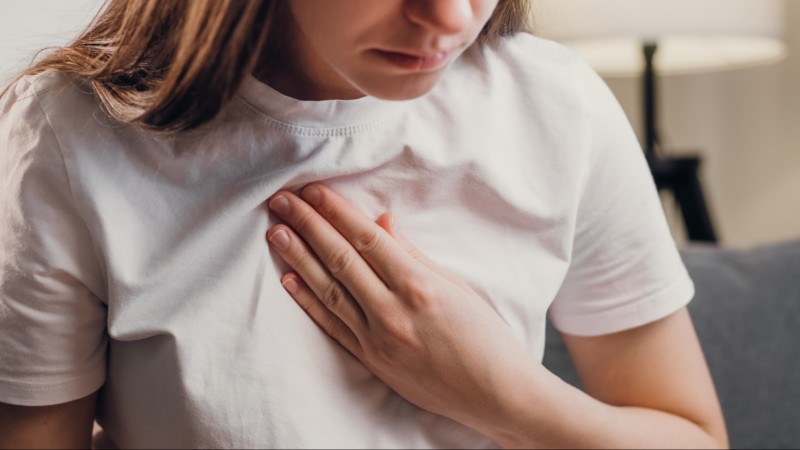The latest tech advancing cardiac imaging
MDlinx Jan 25, 2024
An AI system, comprising a portable ultrasound device and algorithms capable of detecting RHD based on mitral regurgitation (MR) by echocardiography, could detect RHD with MR with the same accuracy as a cardiologist. This is according to a study published in the Journal of the American Heart Association, which demonstrates the potential for how machine and deep learning technology can potentially enhance cardiac care globally.
Brown K, Roshanitabrizi P, Rwebembera J, et al. Using artificial intelligence for rheumatic heart disease detection by echocardiography: focus on mitral regurgitation. J Am Heart Assoc. 2024;13(2):e031257.

The importance of early detection
"This technology has the potential to extend the reach of a cardiologist to anywhere in the world,” said co-lead author Kelsey Brown, MD, in a news release.
Children’s National Hospital. Novel AI platform matches cardiologists in detecting rheumatic heart disease. January 16, 2024.
“In one minute, anyone trained to use our system can screen a child to find out if their heart is demonstrating signs of RHD. This will lead them to more specialized care and a simple antibiotic to prevent this degenerative disease from critically damaging their hearts.”
RHD is the most commonly acquired cardiovascular disease in individuals younger than 25, occurring most frequently in children.
World Health Organization. Rheumatic heart disease. November 6, 2020.
It is most common In low‐ and middle‐income countries. Overall, patients with RHD are primarily diagnosed late, potentially leading to life-long disability or even death. With early detection, before symptoms of advanced cardiac disease or complications develop, antibiotic prophylaxis can be initiated to prevent disease progression.
In the study by Dr. Brown and colleagues, an expert panel independently reviewed 511 echocardiograms in children, focusing on color Doppler images of the mitral valve. Of the 511 children, 282 children had RHD.
The researchers compared these manual measurements with those from the automated AI method. For this method, convolutional neural networks synchronized the echocardiograms to localize the left atrium during systole. The method also included MR jet length and analysis, along with deep learning models, to detect RHD.
Convolutional neural networks are a class of artificial neural networks designed to “automatically and adaptively learn spatial hierarchies of features through backpropagation by using multiple building blocks, such as convolution layers, pooling layers, and fully connected layers,” according to authors of an article from the journal Insights into Imaging.
Yamashita R, Nishio M, Do RKG, et al. Convolutional neural networks: an overview and application in radiology. Insights Imaging 9, 611–629 (2018). doi.org/10.1007/s13244-018-0639-9.
A high degree of accuracy
For RHD detection based on MR jet analysis, the average length estimations of the MR jet for the AI method and the manual measurements were similar, at 2.06±0.93 cm and 2.06±0.77 cm (P=0.83), respectively. When applied to a nine‐feature MR analysis, the machine learning approach achieved an area under the receiver operating characteristics curve (AUC) of 0.93, with precision of 0.83, recall of 0.92, and an F1 score of 0.87. The deep learning model to detect RHD showed an AUC of 0.84, precision of 0.78, recall of 0.98, and an F1 score of 0.87.
To further improve the accuracy, the authors plan to incorporate other RHD features into their AI algorithm. To date, the AI algorithm has analyzed 39 heart features that cardiologists cannot detect or measure unassisted.
Pooneh Roshanitabrizi, PhD, an investigator on the study, summed up the significance of these new advances: “Our algorithm can see and make adjustments for the heart’s size as a continuously fluid variable,” she said in the news release. “In the hands of healthcare workers, we expect the technology to amplify human capabilities to make calculations far more quickly and precisely than the human eye and brain, saving countless lives.”
AHA's position on AI in imaging
In January 2024, the American Heart Association (AHA) released a scientific statement on the emerging role of AI in cardio imaging.
Hanneman K, Playford D, Dey D, et al. Value Creation Through Artificial Intelligence and Cardiovascular Imaging: A Scientific Statement From the American Heart Association. Circulation. 2024;149:e1-e16. Published online January 9, 2024.
The statement, published in Circulation, is organized into three sections. The first explores how to create value and ensure the successful use of AI tools in the real world, by considering the perspectives from clinicians, patients, imagers, hospitals, and payors. The concept of value chain analysis is introduced.
The second section summarizes the different AI tools and discusses the unique features of AI applications to the four main cardiac imaging modalities: ultrasound, computed tomography, magnetic resonance imaging, and radionuclide imaging (positron emission tomography and single-photon emission computed tomography).
Finally, the statement describes the potential for AI to enhance value creation when applied to activities within the cardiac imaging value chain, including decision support, image acquisition, image reconstruction, image analysis and interpretation, reporting and communicating, and prediction and treatment planning.
“AI is applicable and has the potential to add value to cardiovascular imaging at every step along the patient journey, from selecting the more appropriate test to optimizing image acquisition and analysis, interpreting the results for classification and diagnosis, and predicting the risk for major adverse cardiac events,” the Circulation authors concluded.
What this means for you
AI-based echocardiography may detect mitral regurgitation due to rheumatic heart disease with the same high accuracy as cardiologists. Moreover, AI may add value to many modes of cardiac imaging during image selection, acquisition, and interpretation.
-
Exclusive Write-ups & Webinars by KOLs
-
Daily Quiz by specialty
-
Paid Market Research Surveys
-
Case discussions, News & Journals' summaries